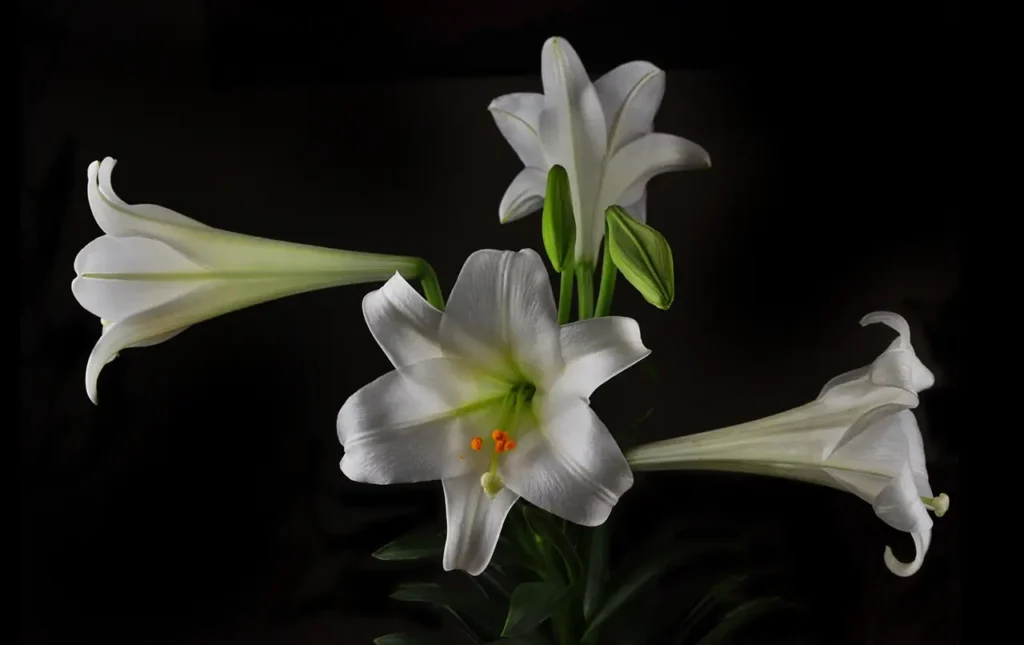Lillies are one of the most popular and versatile flowers in the world. They come in a wide range of colors, shapes, sizes, and fragrances, and they can be grown in different climates and seasons. Whether you want to add some beauty and elegance to your garden, or you want to express your love and admiration to someone special, lillies are a great choice. In this article, you will learn everything you need to know about lillies, including their history, types, meanings, care tips, and more. By the end of this article, you will be able to appreciate and enjoy these amazing flowers even more.
Origins of Lillies
lillies are among the oldest cultivated plants in the world. They have a rich history and symbolism in many cultures and religions. Here are some facts about the origins of lillies:
- The scientific name of lillies is Lilium, which comes from the Greek word leirion, meaning “a lily”
- lillies are native to the temperate regions of the Northern Hemisphere, especially Asia, Europe, and North America
- lillies have been cultivated for more than 3,000 years. The earliest evidence of lily cultivation was found in Crete, where a fresco depicting lillies was dated to around 1580 BC.
- lillies were used for various purposes in ancient times, such as food, medicine, perfume, and decoration. The bulbs of some species were eaten or used to make ointments, while the flowers were used to make garlands, wreaths, and crowns
- lillies have a strong association with purity and divinity in many religions. In Greek mythology, lillies were created from the breast milk of Hera, the queen of the gods. In Christianity, lillies are a symbol of the Virgin Mary and the resurrection of Christ. In Buddhism, lillies represent enlightenment and compassion
Popular species of lillies
lillies are beautiful and fragrant flowers that belong to the genus Lilium. There are many types of lillies, but they are usually classified into nine divisions based on their characteristics and origins. Here are some examples of lillies from each division:
- Division 1: Asiatic Hybrids
These are the most common and diverse lillies, with a wide range of colors and shapes. They are not very fragrant, but they are easy to grow and bloom early in the summer. Some popular varieties are ‘Tiny Sensation’, ‘Orange Pixie’, and ‘Lollypop’.
- Division 2: Martagon Hybrids
These are also known as Turk’s cap lillies, because of their downward-facing flowers with recurved petals. They are very fragrant and prefer cool and shady conditions. Some popular varieties are ‘Arabian Knight’, ‘Claude Shride’, and ‘Manitoba Morning’.
- Division 3: Candidum Hybrids
These are also known as European lillies, because they originate from the Mediterranean region. They have white or yellow flowers with a sweet scent. They bloom in late spring or early summer. Some popular varieties are ‘Madonna Lily’, ‘June Fragrance’, and ‘Snow Queen’.
- Division 4: American Hybrids
These are also known as wild lillies, because they are derived from native species of North America. They have large and colorful flowers with a spicy fragrance. They bloom in mid to late summer. Some popular varieties are ‘Tiger Lily’, ‘Black Beauty’, and ‘Pink Perfection’.
- Division 5: Longiflorum Hybrids
These are also known as Easter lillies, because they are often used as potted plants for Easter. They have white, trumpet-shaped flowers with a mild fragrance. They bloom in late spring or early summer. Some popular varieties are ‘Ace’, ‘White Heaven’, and ‘Nellie White’.
- Division 6: Trumpet and Aurelian Hybrids
These are also known as trumpet lillies, because of their large and elegant flowers with a trumpet shape. They are very fragrant and can have single or double petals. They bloom in mid to late summer. Some popular varieties are ‘African Queen’, ‘Golden Splendor’, and ‘Pink Perfection’.
- Division 7: Oriental Hybrids
These are also known as oriental lillies, because they originate from Japan and China. They have large and exotic flowers with a strong fragrance. They can have various colors and patterns, such as spots, stripes, or picotees. They bloom in late summer or early fall. Some popular varieties are ‘Casa Blanca’, ‘Stargazer’, and ‘Mona Lisa’.
- Division 8: Interdivisional Hybrids
These are also known as hybrid lillies, because they are crosses between different divisions of lillies. They have various characteristics and features, depending on their parentage. They can bloom at different times of the year. Some popular varieties are ‘LA Hybrid’, ‘OT Hybrid’, and ‘LO Hybrid’.
- Division 9: Species
These are also known as wild or botanical lillies, because they are the original species of lillies that grow in nature. They have various forms and colors, depending on their habitats and regions. They are often used as parents for hybridization. Some popular species are ‘Lilium regale’, ‘Lilium martagon’, and ‘Lilium candidum’.
Conclusion
Lillies are beautiful and versatile flowers that can brighten up any garden or bouquet. They come in many colors, shapes, and sizes, and have different meanings and symbolism. Whether you want to grow them, gift them, or enjoy them, lillies are a great choice for any occasion. In this article, we have learned about the history, types, care, and meaning of lillies, and how to make the most of these lovely blooms. We hope you have enjoyed this lillies 101 guide and found it useful and informative.







